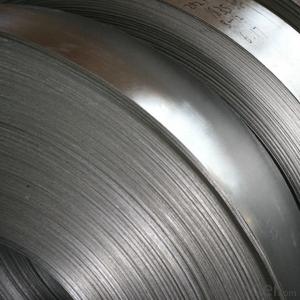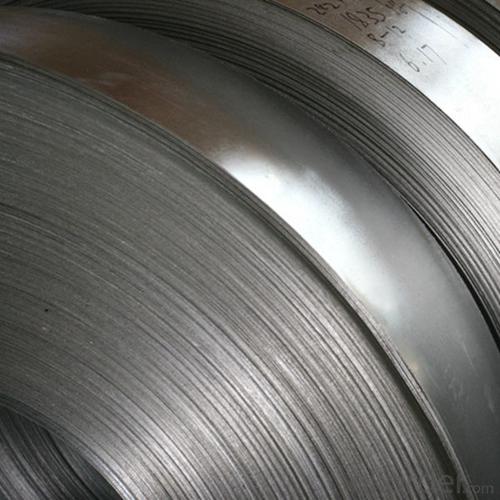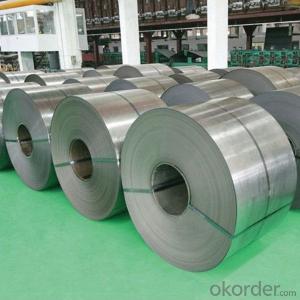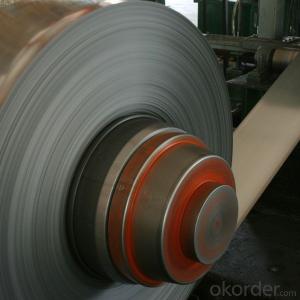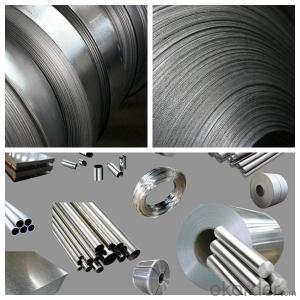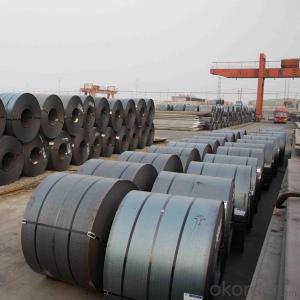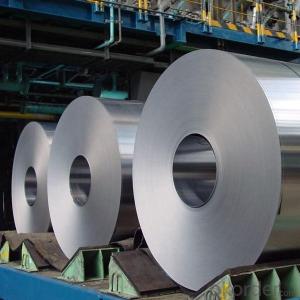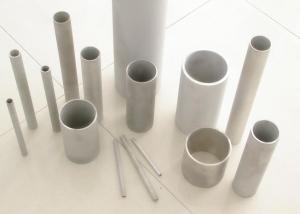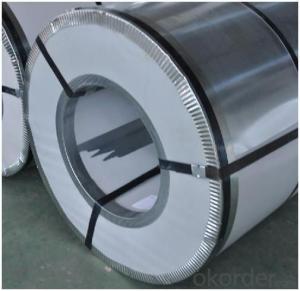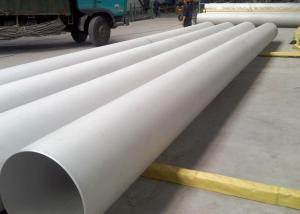Stainless Steel Hot Rolled Products NO.1 Stainless Steel Made In China
- Loading Port:
- Qingdao
- Payment Terms:
- TT OR LC
- Min Order Qty:
- 50 m.t.
- Supply Capability:
- 20000 m.t./month
OKorder Service Pledge
OKorder Financial Service
You Might Also Like
Specification
Products Description for Stainless Steel Coils/Sheets:
Name: stainless steel coils/plates/sheets
Discharge Port: Any Port, China
Cold Rolled Size: Thickness0.3-8mm,Width:280-2100mm
Hot Rolled Size: Thickness3-14mm,Width:650-2100mm
Hot Rolled/Cold Rolled Plates : Thickness2-80mm,Width:1500-3000mm
Coil Weight: About 20 Tons
Grade: 201,202,304/304L/304H, 316/316L/316H, 409/L,430 etc.
Technique: Hot Rolled/Cold Rolled
Finish:2B, BA, 2D, No1, No2 etc
Edge: Mill Edge / Slitting Edge
Packaging: In bundles, or as customer's requirement
Place of Origin: Made in China
MOQ: 20 Tons
Payment Terms: 100% LC at sight, or 100%TT in advance
Delivery Time: With 30-40 days after deposit
Technical notes:
Surface Finish | Definition | Application |
2B | Those finished, after cold rolling, by heat treatment, pickling or other equivalent treatment and lastly by cold rolling to given appropriate luster. | Medical equipment, Food industry, Construction material, Kitchen utensils. |
BA | Those processed with bright heat treatment after cold rolling. | Kitchen utensils, Electric equipment, Building construction. |
NO.3 | Those finished by polishing with No.100 to No.120 abrasives specified in JIS R6001. | Kitchen utensils, Building construction. |
NO.4 | Those finished by polishing with No.150 to No.180 abrasives specified in JIS R6001. | Kitchen utensils, Building construction, Medical equipment. |
HL | Those finished polishing so as to give continuous polishing streaks by using abrasive of suitable grain size. | Building Construction. |
NO.1 | The surface finished by heat treatment and pickling or processes corresponding there to after hot rolling. | Chemical tank, pipe |
Features of Stainless Steel Coils
(1)Good ductility
(2)Good corrosion resistance
(3)Excellent abrasion resistance and fatigue strength
(4)Good weldability
(5)Oxidation resistant performance
(6)Excellent in high temperature
Detail picture for Stainless Steel Coils/Sheets
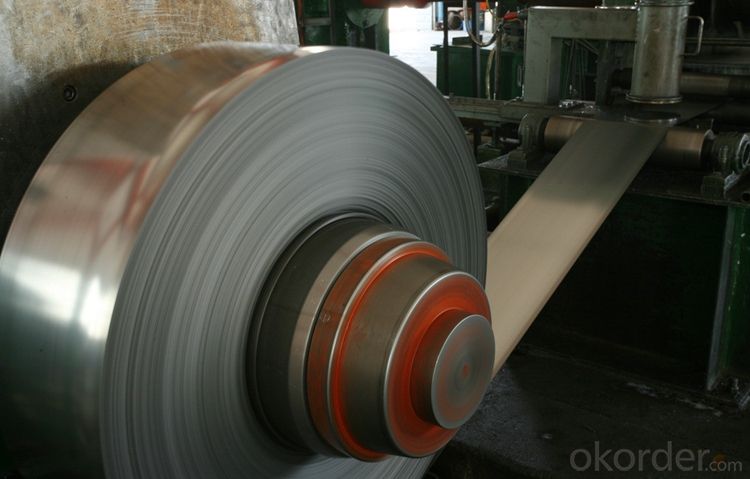

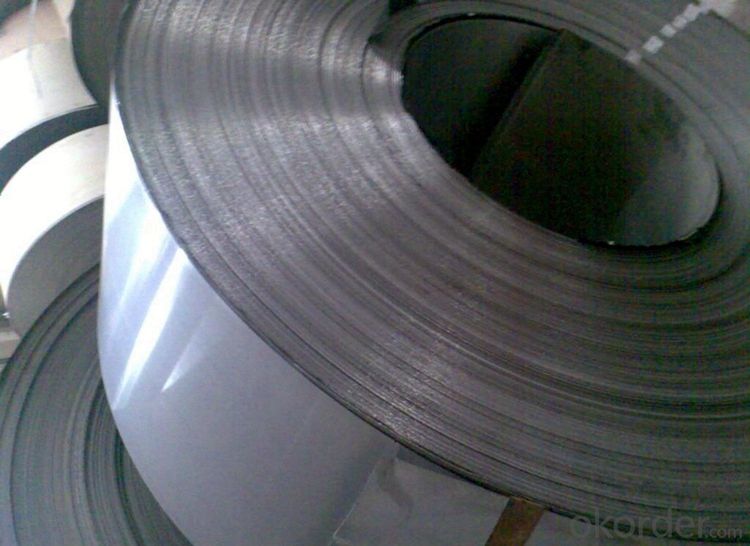
Our Service
1.High quanlity and reasonable price.
2.Customized on-demand.
3.Reasonable shipping and fast delivery.
4.Free sample.
FAQ for Stainless Steel Coils/Sheets:
Q:How to order?
A: Please send us your purchase order by email or fax .or you can ask us to send you a proforma invoice for your order .We need to know the following information for your order.
1) Shipping information-company name, street address, phone number, fax number, destination sea port
2) Product information – Quantity, Specification (steel type, thickness, width, surface finish)
3) Delivery time required
4) Forwarder's contact details if there's any in China
- Q: What is the hardness of stainless steel sheets?
- The hardness of stainless steel sheets can vary depending on the specific grade and treatment. However, stainless steel sheets typically have a hardness ranging from 70 to 90 Rockwell B.
- Q: Are stainless steel sheets suitable for elevator wall panels?
- Yes, stainless steel sheets are suitable for elevator wall panels. Stainless steel is a popular material choice for elevator wall panels due to its durability, corrosion resistance, and aesthetic appeal. Elevators are high-traffic areas that require a material that can withstand constant use and potential impact. Stainless steel sheets are robust and can withstand wear and tear. Additionally, stainless steel is highly resistant to corrosion, making it suitable for environments with high humidity or exposure to chemicals. Furthermore, stainless steel has a sleek and modern appearance that adds a touch of elegance to the elevator interior. Overall, stainless steel sheets are a reliable and aesthetically pleasing choice for elevator wall panels.
- Q: What's the difference between 304 stainless steel and 314?
- 304 stainless steel is a universal stainless steel material: 314 stainless steel; high temperature oxidation resistance and strong mechanical properties; high heat resistant stainless steel, and 314 austenitic stainless steel, high temperature oxidation resistance and creep resistance. 314 stainless steel used in furnace tube difference
- Q: What are the different types of stainless steel sheet finishes for medical applications?
- Medical applications commonly utilize various types of stainless steel sheet finishes, each designed to possess specific qualities and characteristics necessary for such environments. A prevalent finish is the 2B finish, acquired through a cold-rolling process, which yields a smooth, reflective surface. This finish is frequently employed in medical instruments and equipment due to its ease of cleaning and high resistance to corrosion. Additionally, the No. 4 finish, also referred to as a satin finish, is widely used in medical cabinets and surfaces. This finish showcases a brushed appearance and offers a favorable combination of aesthetics and functionality. It boasts easy cleaning capabilities and reliable corrosion resistance. For more specialized applications, options like the No. 8 mirror finish are available. This finish exhibits a highly reflective surface and often finds application in surgical instruments and other high-end medical equipment. It not only presents a visually appealing surface but also demonstrates excellent corrosion resistance. Furthermore, alternative finishes, such as the bead blast finish, contribute to the medical equipment industry. This finish imparts a matte surface with a textured appearance, ideal for medical equipment requiring a non-reflective surface. Ultimately, the selection of a stainless steel sheet finish for medical applications depends on the specific requirements of the equipment or surface. Each finish possesses distinct advantages and characteristics, necessitating careful consideration to ensure optimal performance and longevity in a medical environment.
- Q: Can stainless steel sheets be used for hygienic applications?
- Yes, stainless steel sheets can be used for hygienic applications. Stainless steel is known for its excellent hygiene properties due to its non-porous surface, which makes it resistant to bacteria, mold, and other microorganisms. It is also easy to clean and maintain, making it suitable for applications where cleanliness and hygiene are crucial, such as in the food and beverage industry, healthcare facilities, and pharmaceutical manufacturing. Additionally, stainless steel is highly durable, corrosion-resistant, and can withstand high temperatures, making it an ideal material for hygienic applications.
- Q: What are the benefits of using brushed stainless steel sheets?
- Using brushed stainless steel sheets has several advantages. To begin with, their sleek and attractive appearance makes them a popular choice for appliances, countertops, and backsplashes. The brushed finish adds a unique texture and matte appearance, bringing sophistication to any space. Additionally, brushed stainless steel sheets are highly durable and resistant to corrosion, making them suitable for indoor and outdoor use. They can withstand harsh conditions such as chemicals, moisture, and extreme temperatures. Moreover, their brushed finish helps to hide fingerprints, smudges, and scratches, making them easy to clean and maintain. Furthermore, brushed stainless steel sheets are hygienic and inhibit bacteria growth, making them ideal for the food and medical industries. Their smooth surface allows for easy cleaning and disinfection, ensuring a safe and sanitary environment. Moreover, these sheets offer excellent longevity and are a cost-effective investment. They resist wear and tear, maintaining their appearance for many years without the need for replacement. Lastly, brushed stainless steel sheets are versatile and can be customized to fit different design preferences. They can be easily cut, shaped, and formed into various sizes and shapes, allowing for endless design possibilities. Whether you prefer a modern, industrial look or a more traditional and elegant style, brushed stainless steel sheets can be tailored to meet your specific needs. In conclusion, the use of brushed stainless steel sheets offers benefits such as an attractive appearance, durability, corrosion resistance, hygienic properties, longevity, and versatility. Whether used in residential, commercial, or industrial settings, these sheets provide a wide range of advantages, making them a popular choice for various applications.
- Q: Are stainless steel sheets suitable for water treatment applications?
- Water treatment applications can greatly benefit from the use of stainless steel sheets. The reason for this is that stainless steel has exceptional resistance to corrosion, making it the perfect material for environments where there is a presence of water and moisture. It is able to withstand rust, staining, and pitting, guaranteeing the sheets' longevity and durability in water treatment facilities. Moreover, stainless steel sheets possess hygienic qualities. They are effortless to clean and maintain, which is especially crucial in water treatment applications where cleanliness and sanitation are of the utmost importance. Additionally, stainless steel does not react with water, meaning it does not release harmful substances into the water being treated. In addition to these benefits, stainless steel sheets exhibit strength and can tolerate high pressures and temperatures. This is highly significant in water treatment processes that involve filtration, disinfection, and other treatment methods that may require rigorous conditions. To conclude, stainless steel sheets are an outstanding option for water treatment applications due to their resistance to corrosion, hygienic properties, strength, and durability. They present a dependable and long-lasting solution for various components in water treatment facilities, including tanks, pipes, valves, and other equipment.
- Q: Are stainless steel sheets resistant to saltwater corrosion?
- Yes, stainless steel sheets are highly resistant to saltwater corrosion. Stainless steel is known for its exceptional corrosion resistance, making it an ideal material for applications exposed to saltwater environments. The chromium content in stainless steel forms a protective oxide layer on the surface, which acts as a barrier against corrosion. This oxide layer prevents the steel from coming into direct contact with saltwater, thereby reducing the risk of corrosion. Additionally, stainless steel grades such as 316 and 316L are specifically designed to offer better resistance to saltwater corrosion, making them even more suitable for marine applications. Overall, stainless steel sheets are a reliable choice for saltwater environments due to their excellent corrosion resistance properties.
- Q: What's the difference between stainless steel coil and stainless steel plate?
- One is a coil and the other is a strip.
- Q: What is the maximum thickness available for stainless steel sheets?
- The maximum thickness available for stainless steel sheets can vary depending on the specific grade of stainless steel and the manufacturing capabilities of the supplier. However, in general, stainless steel sheets can be found in thicknesses ranging from 0.5mm to 80mm. It is important to note that thicker sheets are typically used for specialized applications that require increased strength and durability, such as construction projects or heavy machinery. When selecting stainless steel sheets, it is crucial to consider the intended use and consult with a reputable supplier to ensure that the desired thickness is available.
Send your message to us
Stainless Steel Hot Rolled Products NO.1 Stainless Steel Made In China
- Loading Port:
- Qingdao
- Payment Terms:
- TT OR LC
- Min Order Qty:
- 50 m.t.
- Supply Capability:
- 20000 m.t./month
OKorder Service Pledge
OKorder Financial Service
Similar products
Hot products
Hot Searches
Related keywords
